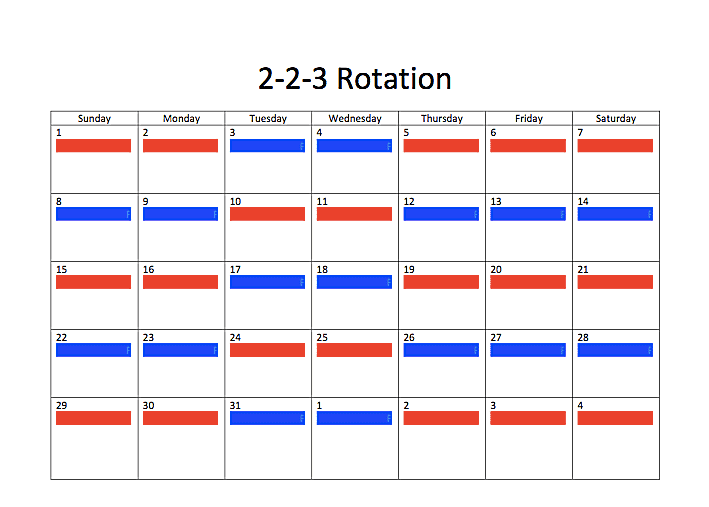When talking about taking your child to work day, what should you do?
Take Your Child to Work Day, is a national day that gives children in the look inside the working world in the United States. The day was created by the Take Our Daughters And Sons To Work Foundation, a 501(c)(3) non-profit organization that promotes education. It centers around parents bringing their kids to work to expose kids to potential future careers and the importance of education. It is the successor to Take Our Daughters To Work Day, which was expanded to include boys in 2003. It always takes place on the fourth Thursday of April in the United States.
For more information on bringing your child to work day, please continue reading.
Table of Contents
Do’s Of Taking Your Child To Work Day
The following list of things to do will help you and your child have the best Take Your Child to Work Day ever:
- Conduct programming research: Knowing what to anticipate will help you and your child be ready and prepared for the day.
- Understand the suggested age ranges: If the Take Your Child to Work Day schedulers at your place of employment advise against bringing in children under the age of five, heed their advice. Consider delaying your child’s visit until they are in middle or high school if you work in an environment with large machinery or other potentially hazardous equipment.
- Inquire about amenities: Take into account significant specifics that might have an impact on your child’s visit, such as whether your workplace will offer kid-friendly snacks or if there will be a space for younger children to nap if necessary. Be aware of the comforts your child will need from home and those that will be provided by your employer.
- Consider your schedule and remove any important or protracted meetings from the Take Your Child to Work Day calendar. Prepare in advance to meet any goals since you might not accomplish as much work as you usually do.
- Set guidelines: Your child should understand the proper conduct expected at your place of employment. Establish clear expectations and penalties.
- Have a backup plan in place because young children might not be able to get through the entire day. If necessary, have a nanny or babysitter ready to pick up your child.
- Check with your boss: Before bringing your child to work for the day if your workplace does not have a Take Your Child to Work Day program, be sure to speak with your boss and any immediate coworkers.
- Inform the school: Call the place where your child attends school to let them know that your child will be spending the day with you rather than in the classroom. If makeup is required, schedule it in advance.
- Discuss with other parents: Together with other parents at your place of employment, create a schedule. To give children exposure to multiple occupations, you can switch kids between coworkers.
- Present your child to your coworkers when you arrive. Show your child an example of how to introduce yourself in a professional setting.
- Review the day: Have a conversation with your child about it during the car ride home or at dinner that night. Ask them what they thought of your workplace, your position and the program.Don’ts for Take Your Child to Work Day
Don’ts Of Take Your Child To Work Day
For Take Your Child to Work Day to be a success, there are some actions you should avoid. Observe the following prohibitions:
- Don’t push your child to go to work with you if they don’t want to: You and your kid will only have a difficult day as a result.
- Overstimulate: Be aware of your child’s limitations. Give your child a chance to relax if they appear to be losing focus or are becoming overly tired.
- Children have shorter attention spans than adults, so avoid boring your kids. Your child might find it difficult to concentrate on a spreadsheet for several hours while you might. If necessary, bring something to keep them occupied while you work.
- Ignore your child: You can’t expect to leave your child unattended while you go to work. At all times, make sure you are with them or are aware of their whereabouts.
- Possess a negative outlook: Try to put aside any unpleasant aspects of your job or strained relationships with coworkers for the sake of your child. When your child is present at work, maintain a positive attitude.
- Act as if your position is different: Whatever you decide to do, it will be impressive to your child. It is unnecessary to act as though you are doing something you are not.
- Multiple years in a row, bring your child: Once your child has visited your workplace a few times, find an aunt, uncle, or friend who will bring them. In exchange, you must bring their kids inside.
Read about: Can You Lose A Job Offer By Negotiating Salary
Taking Our Kids To Work Day History
Have you ever wanted to accompany your parents to work when you were a child? Was it exciting to you to think about going to work with your parents? Take Our Kids to Work Day is a memorable occasion for American kids. or The working world in Canada is shown.
Another name for this day is Take Our Sons and Daughters to Work Day. Previously, Take Our Kids to Work Day mainly targeted young girls. Ms. launched this educational program. The 1993 Foundation for Women To introduce young girls to the realities of the workplace, this day was organized. Later on, the program included taking boys to their places of employment.
For Take Our Sons and Daughters to Work Day in 2018, nearly 3.5 million workplaces participated. In the United States and Canada, this day began as an educational initiative during which parents could send their children to school for the day. Children benefit from learning about the workforce and the various roles people play in running a business as a result of this day. They may even discover one of the fields to be of interest to them.

Ways To Celebrate “Take Your Child To Work Day”
The following enjoyable pursuits are perfect for a special “take your child to work” day!
Job Fair
An internal job fair can be a great way to introduce teens to the realities of working in an office on “Take Your Child to Work” Day.
The majority of teenagers are seeking guidance on what profession or field they want to enter. Having them visit the workplace to experience what it’s like to work there can be beneficial. Teenagers can learn how different departments work together by attending presentations given by employees about their roles and duties.
Personal Assistant Position
Make the kids help out the adults. You can force them to perform easy tasks like take notes or file paperwork. They will learn how to manage their time and tasks as well as their sense of responsibility.
The kids will be able to learn and interact with various staff members if they are required to help other employees. Their interactions with others will improve as a result of this, helping them to mature and grow.
Quiz Time
Quiz games are a fun way to get the kids to work as a team, which will help them connect and interact with one another.
Group the children into teams. Make a list of inquiries, and give points for each accurate response. Spend about 10 minutes doing this. The team with the most points at the end is declared the winner.
A game like Pictionary, Charades, or trivia can be played.
Daily Salesperson Of The Day
You could plan a “salesperson of the day” activity for the kids who come into your office. This is an excellent way to teach children the value of providing excellent customer service and how to interact with others.
Remember to keep things lighthearted and straightforward, like selling candy bars to everyone in the office.
Crisis Simulation
Give the kids a set of problems or fictitious business crises to resolve together. If there is a password security breach, for instance, you might inform them of it. Then, request that they speak with a particular employee of the business.
They will learn practical skills from this that they can use later, when they are prepared for their first job. They will be encouraged to collaborate and come up with new ideas, and they will learn how to handle pressure from this.
Ad Assignment
Giving the students a project on advertising is a great way to encourage creativity and critical thinking in them.
Create a task where the students must create an advertisement for a good or service they wish to sell. They can be grouped into two or three person teams.
If they enjoy drawing, have them create graphics and signs for the company. They can even write a script for the advertisement and perform it.
Taking Our Kids To Work Day FAQs
What Advantages Come From Bringing Kids To Work?
Taking your kids to work can be a great way to strengthen your relationship with them because it will allow you to interact with them on a different level and let them see another side of you.
The Ability To Bring A Child To Work Every Day
Due to employee productivity issues, property liability concerns, and a desire to uphold a professional image, the majority of companies generally do not permit employees to bring their children to work with them.
Why Do We Bring Our Kids Along When We Go To Work?
The main goals of bringing children to work are to help them develop self-esteem, learn about the workforce, and give them an understanding of what their parents do at work.
Conclusion
The article concentrated on Bring Your Child to Work Day.
“The fourth Thursday in April is “Bring Your Child to Work” Day, when workplaces across the nation throw open their doors to give the children of their employees a taste of the working world. While the original “Bring Your Child to Work Day” was intended to empower girls, most workplaces now accept both boys and girls equally.
If your employer sponsors a formal “Bring Your Child to Work Day,” you’re in luck! As soon as you learn the coordinator’s name, register your child.
However, even if nothing official is scheduled for this day, you can still take advantage of “Bring Your Child to Work Day.”” It can be a wonderful opportunity for you and your kids to bond if you plan ahead.
We appreciate you reading. Please see our most recent posts for more information about why piggy banks are such wise investments. Have a nice day!



